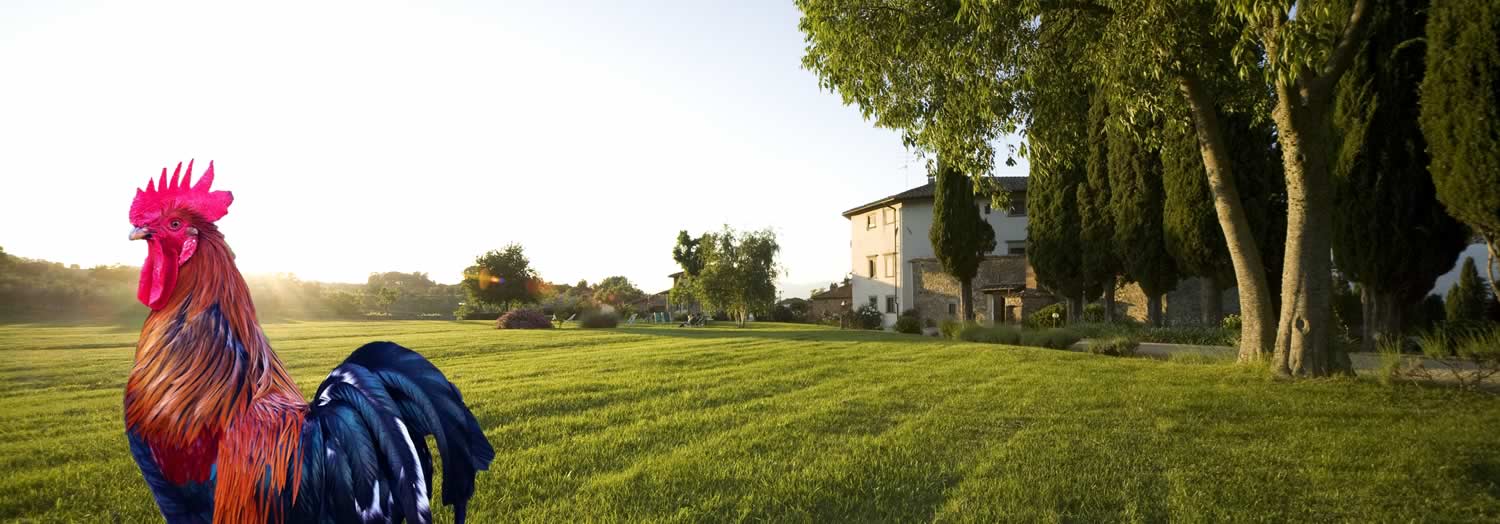
Local History: The Church of San Cresci
San Cresci is a lovely Romanesque-style church just a 30-minute walk down the road from the Villa Campestri estate, dedicated to the early Christian martyr Cresci. Associated with Minias, another saint important to early Florentine history, Cresci is credited with healing sick children and introducing the Christian religion to the Mugello region. So why not take a walk while you’re visiting, right into the pages of local history?
Cresci arrived in Italy from Germany in the 3rd century A.D. and was shortly thereafter befriended by Minias. For practicing the emerging and as yet unrecognized Christian cult—and refusing to acknowledge the Roman gods—the two were arrested, with Minias put in the Florence arena to face the lions. According to legend, the lions left the devout Minias unharmed, and thus to satisfy the Roman audience, Minias was beheaded before the viewing public. Cresci, on the other hand, was placed in prison, where he encountered a guard named Ognone, whose sick child Cresci healed. Ognone converted, freed Cresci, and the two along another prisoner named Emptius escaped to the rural country outside Florence, specifically to a place known as Valcava, right here in the Mugello.
The three encountered a poor country woman named Panfila, who offered them food and a place to rest. Panfila, too, had a sickly child, a son named Serapione, whom Cresci also healed after Ognone encouraged the pagan Panfila to convert. Cresci then baptized Panfila as well as the boy, renaming him Cerbone. Word about the miraculous healing spread, and thus slowly locals came to know and convert to the new faith.
As news about these events travelled, the Romans soon tracked down the escapees. Ognone and Emptius were promised reprieve if they acknowledged the Greek god of medicine and healing Aesculapius over Cresci (archaeological evidence such as Roman-era coins, carved stones, and animal bones found on the site suggest there was in fact a pagan temple here prior, perhaps one dedicated to the god of healing). Refusing, the two were whipped and stoned to death. Cresci was then taken and beheaded, his head mounted on a spike to be carried back to Florence. Panfila and Cerbone managed to hide while these dramatic events unfolded, yet shortly after they, too, were also martyred.
The legend of Cresci does not end here, however. After travelling a short distance with Cresci’s head, the Roman soldier carrying it became exhausted from its inexplicable weight. The head fell to the ground and could not be moved. It was on this spot that Cresci, Ognone and Emptius were buried and afterwards the church built, one of the first in the Mugello. Today San Cresci houses some of the saint’s relics, and inside there is a fascinating Crucifixion, depicting Christ on a tree with a skull at the base, which art and architectural historian David Mayernik has described as “[growing] from the ground of both the Mugello and Golgotha (which means ‘skull place’ in Hebrew), referring to the Tree of Jesse.”
San Cresci was severely damaged in the powerful earthquake that hit Mugello in 1919, and has since been restored.
Quick Booking snippet
Tuscany, an Italian region renowned for its cultural and historical wealth, is home to numerous UNESCO World Heritage Sites. These sites represent not just the architectural and artistic beauty of the region but also its significant historical heritage.
Italian cuisine, celebrated globally, is a mosaic of flavors and traditions. From the rolling hills of Tuscany to the bustling streets of Naples, each region contributes its unique essence to what we recognize as Italian cuisine. This culinary journey explores how history, culture, and regional diversity have shaped the renowned gastronomy of Italy.
Tuscany is world-renowned for its rich winemaking tradition, a heritage rooted in centuries of history and culture. In this detailed guide, which is like a true oenological journey, we will discover not only the fine wines of the region but also the traditions and landscapes that make Tuscany an unmissable destination for wine lovers.
In the heart of Italy, Tuscany stands out as one of the most emblematic regions for wine production. Famous for its landscape of gentle hills, cypress trees, and picturesque villages, this region is also a paradise for wine lovers. Tuscan vineyards, nourished by fertile soil and an ideal climate, produce wines that are appreciated worldwide […]
For those looking for a firsthand experience, the Agricultural Tourism Company Badia di Susinana offers horseback rides and trekking and riding courses with a guide, in addition to hospitality for horses and riders, located in Palazzuolo sul Senio. Alternatively, the Farm I Cavalli del Vento allows crossing beech forests and vast chestnut groves, with rides […]
Sport fishing in Tuscany offers a wide range of opportunities due to the abundance of inland and coastal waters in the region. Specifically, the province of Pistoia, with Lake Nievole in Serravalle Pistoiese, is renowned for trout fishing and other fish such as carp, grass carp, tench, and sturgeon, with a catch and release rule. […]
In Val di Chiana, to savor an authentic Chianina steak, there are several renowned restaurant options: 1. Ristorante Casa Cecco: Offers the chance to taste a Chianina steak in a farmhouse dating back to 1600. 2. Agriturismo di Trequanda: Here, Chianina meat, raised in local pastures and processed by the company’s trusted butcher shop, becomes […]
The Italian Quattrocento was a period of extraordinary artistic effervescence that produced numerous world-renowned artists. Among them, some of the most influential were: 1. Andrea Mantegna (1431–1506): A painter and engraver from Padua, famous for his frescoes in the Camera degli Sposi in Mantua.

